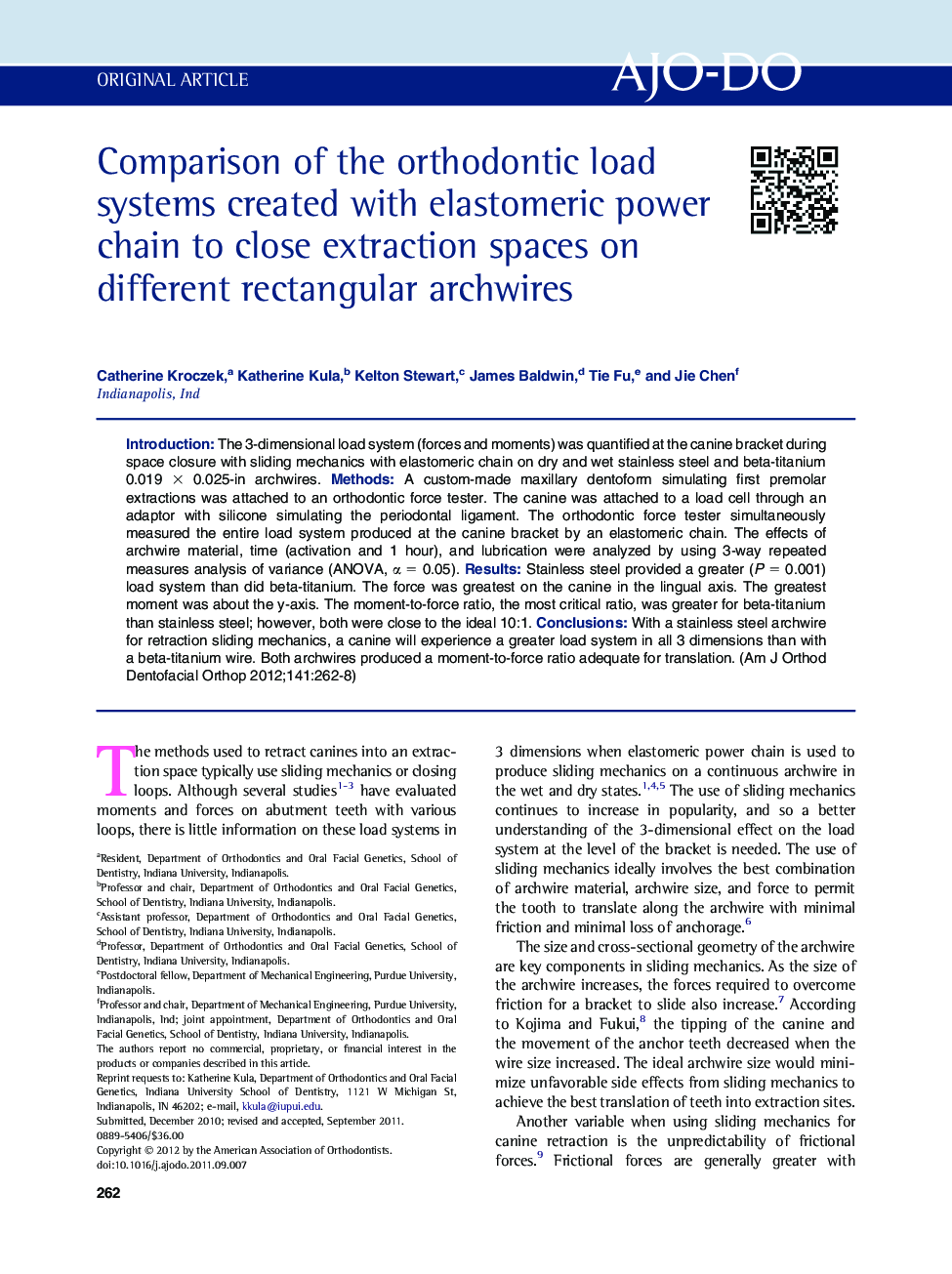| Article ID | Journal | Published Year | Pages | File Type |
|---|---|---|---|---|
| 3117874 | American Journal of Orthodontics and Dentofacial Orthopedics | 2012 | 7 Pages |
IntroductionThe 3-dimensional load system (forces and moments) was quantified at the canine bracket during space closure with sliding mechanics with elastomeric chain on dry and wet stainless steel and beta-titanium 0.019 × 0.025-in archwires.MethodsA custom-made maxillary dentoform simulating first premolar extractions was attached to an orthodontic force tester. The canine was attached to a load cell through an adaptor with silicone simulating the periodontal ligament. The orthodontic force tester simultaneously measured the entire load system produced at the canine bracket by an elastomeric chain. The effects of archwire material, time (activation and 1 hour), and lubrication were analyzed by using 3-way repeated measures analysis of variance (ANOVA, α = 0.05).ResultsStainless steel provided a greater (P = 0.001) load system than did beta-titanium. The force was greatest on the canine in the lingual axis. The greatest moment was about the y-axis. The moment-to-force ratio, the most critical ratio, was greater for beta-titanium than stainless steel; however, both were close to the ideal 10:1.ConclusionsWith a stainless steel archwire for retraction sliding mechanics, a canine will experience a greater load system in all 3 dimensions than with a beta-titanium wire. Both archwires produced a moment-to-force ratio adequate for translation.
